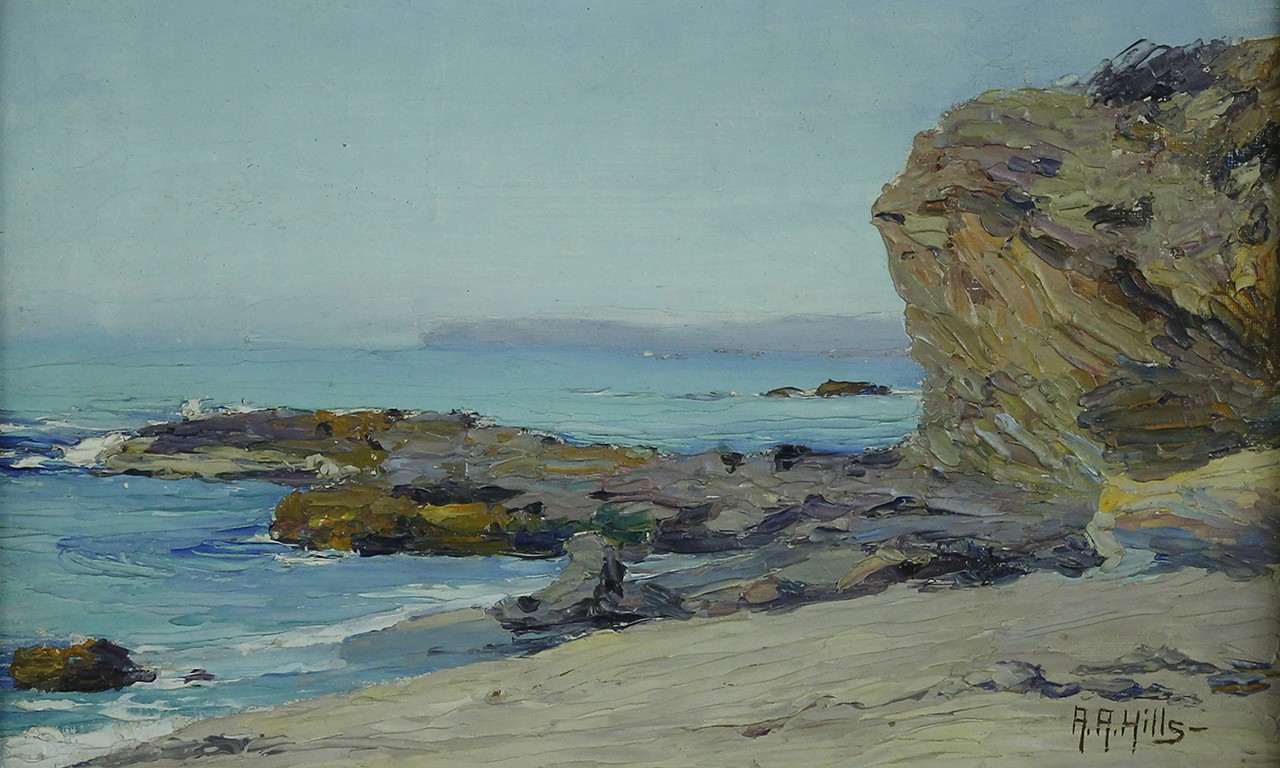 |
Low Tide, c. 1920
Anna Althea Hills (American, 1882-1930)
Oil on canvas; 7 x 10 in.
F7748
Martha C. Stevens Memorial Art Collection |
Centennial
August 18, 2020 marks one hundred years since the Nineteenth Amendment to the US Constitution was ratified, giving most women in the United States the right to vote. In California, Proposition 4 of 1911 had already given women that same right, and while on a national scale there was much to do in terms of securing true gender equality, when the painter Anna Hills moved to Orange County in 1914 it was far-removed from the ongoing national debate. All the same, as a female artist in a world that so often relegates women to footnotes, or has too long presented their careers in art as accessories to that of their husbands’, Anna Hills’ incredible role in establishing long-lasting institutions for the arts, even to the point of being described as a civic leader, makes her a role model and establishes her as an important proponent for equal rights without her ever having been on the record about it.
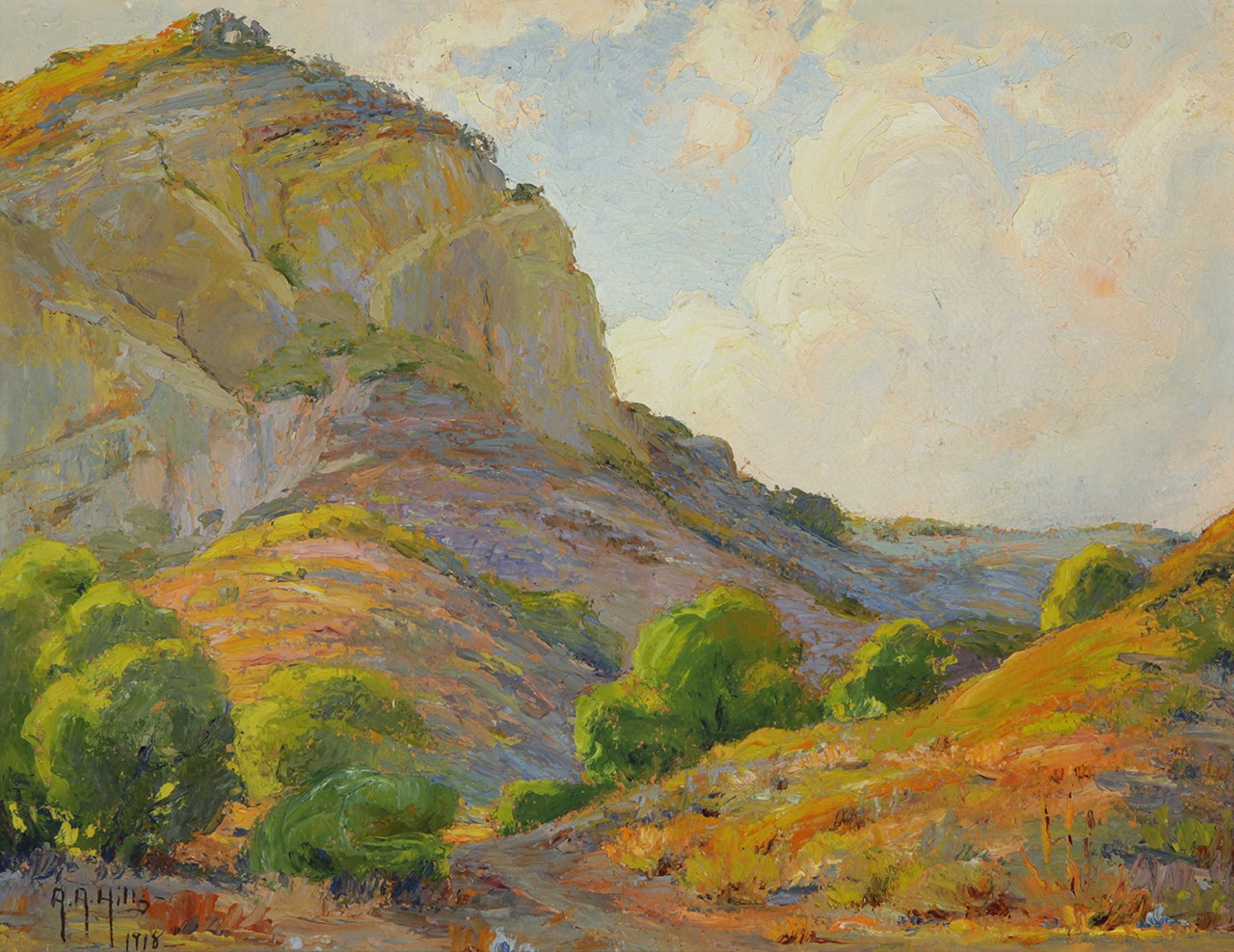 |
Flores Peak, 1918
Anna Althea Hills (American, 1882-1930)
Oil on canvas; 13 x 17 in.
6349
Gift of Miss Nellie Hills |
The Hills Have Eyes for Travel
Due to her father’s work as a Presbyterian Minister, Anna Althea Hills grew up travelling the Midwest with her four brothers and sister Nellie; her mother had passed away by the time she was four years old. By sixteen she had moved out and to Michigan where she studied drawing at Olivet College. Between 1898 and 1913 she attended some of the most prestigious painting academies in the world including the Art Institute of Chicago, New York’s Cooper Union, and L’Académie Julian in Paris—the latter of which was perhaps under the advice of Arthur Wesley Dow, a mentor to Hills who had himself studied there. In addition to Dow, Hills learned from many of the most influential arts educators of the period, including Rhoda Holmes Nichols, an English-American watercolorist and John Noble Barlow who she briefly trained under in England after her time in Paris.
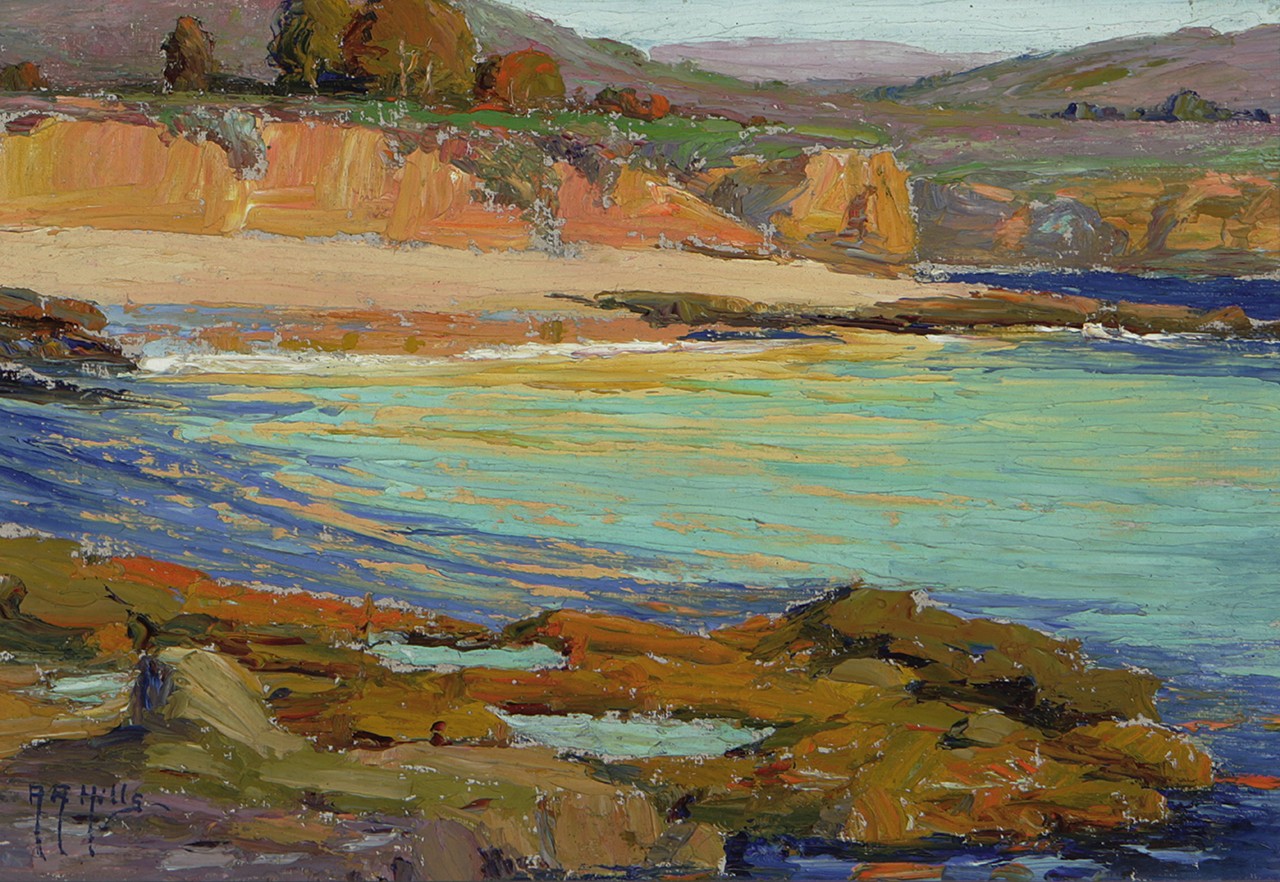 |
The Emerald Sea, 1927
Anna Althea Hills (American, 1882-1930)
Oil on canvas; 7 x 10 in.
F7741
Martha C. Stevens Memorial Art Collection |
From Out of Darkness, Light
It is often remarked that Anna Hills’ early style was tonally dark and focused on interiors. In looking at her impressionistic paintings made in Europe between 1908 and 1913 this is almost immediately confirmed: black silhouetted stands of trees are cast on spent late afternoon light and in her genre paintings encumbered men and women go about daily activities in gloomy rooms. This changes drastically when Hills moves to Los Angeles from Europe to join her family. Both her born love of nature and the same Californian sun that has inspired generation after generation of California painter led to a change in her palette. In speaking to an LA Times art critic years later she jokingly commented that gray could be left out entirely when it came to capturing Southern California. Hills also shifted from a focus on genre paintings to landscapes as she gravitated towards the ruins of Mission San Juan Capistrano, deserts, chaparral, and the infinite puzzle of the ocean.
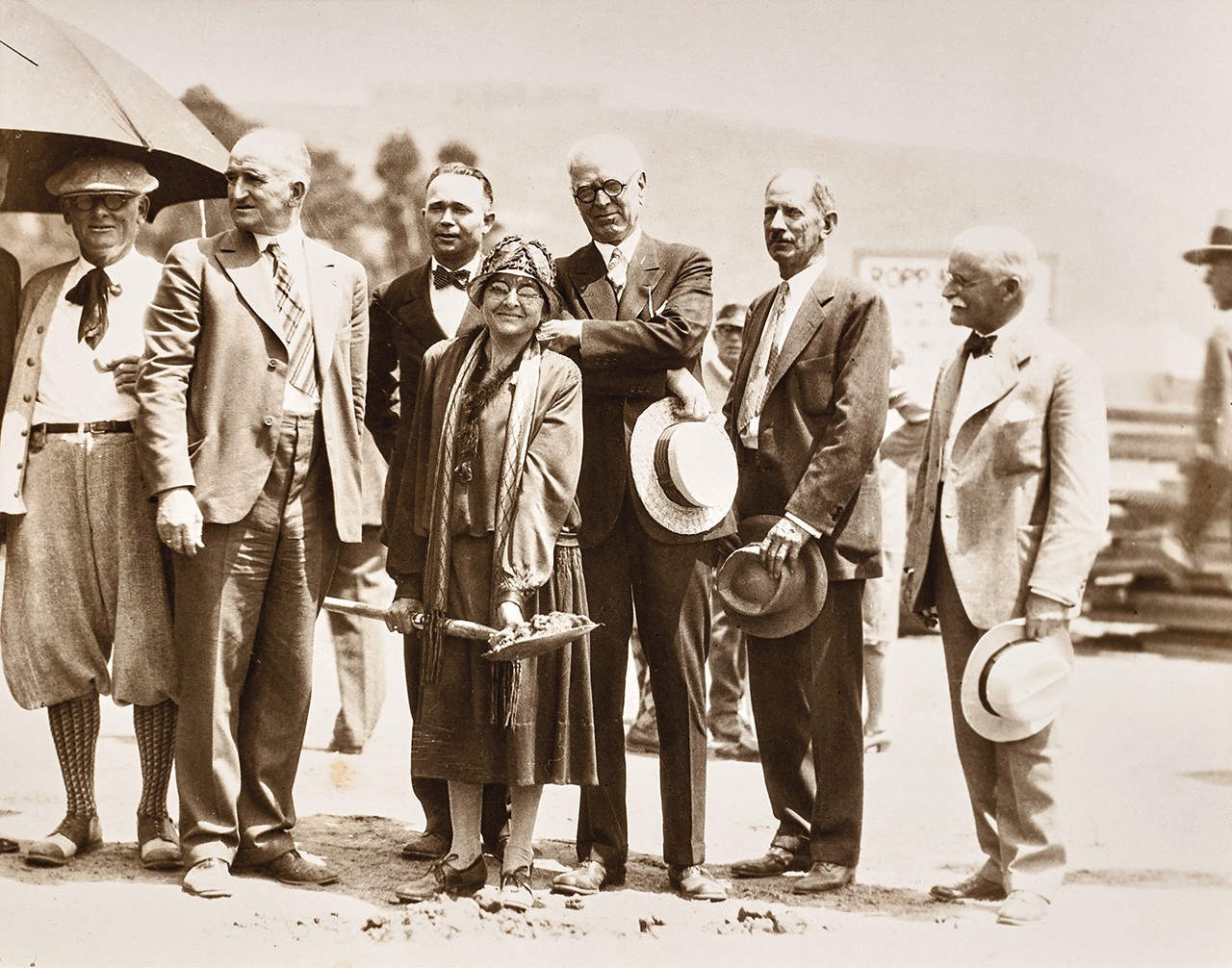 |
| Anna Hills at the groundbreaking of the Laguna Art Museum, 1929 |
Laguna Bravada, What a Wonderful Phrase
After exploring the southlands in her first year living in Los Angeles, Hills concluded that Laguna Beach was the place to be for any artist in the area and moved there in 1914. As much as she loved nature, she was an even bigger proponent of the arts, and the growing art colony there needed a leader. Even before leaving for Paris she had taught at Olivet College, but having trained in Paris and with a growing list of accolades from exhibitions—there are too many to list but a bronze at the highly competitive 1915 Panama–California Exposition is among the most noteworthy—she attained a national reputation as a teacher and lecturer. Working with Edgar Payne, William Wendt, and others, in 1918 Hills founded the Laguna Beach Art Association, a forerunner to the Laguna Art Museum. She served as President to the organization for all but one year between 1922 and 1930 and was pivotal in getting the association the land it sits on today. She was also a part of the California Arts Council.
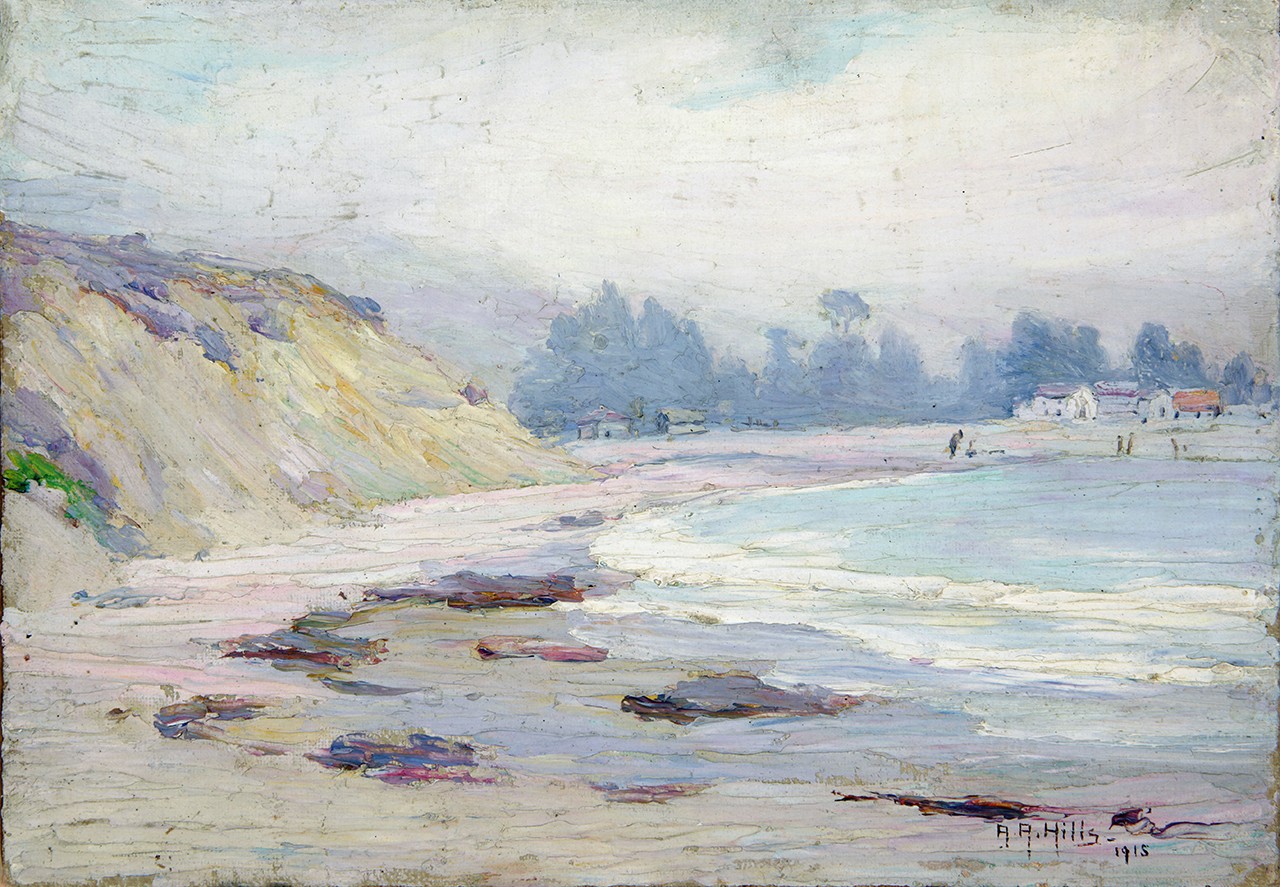 |
A Foggy Morning, Laguna Beach, 1915
Anna Althea Hills (American, 1882-1930)
Oil on canvas; 7 x 10 in.
17283
Gift of Miss Nellie Hills |
Cut Short
Tragically, the woman that the Orange County Illustrator described as "the best known and best loved artist of early days" had a heart attack in 1930 and died at the age of 48. Her sister Nellie who was by many accounts a best friend in addition to family, kept her legacy alive by donating paintings to many institutions in Orange County. The Bowers Museum has 11 oil and watercolor paintings by the artist in its collections. Though she was in France while suffragists were fighting for the right to vote in California and was dedicating her time to supporting the arts in the years leading up to 1920, Hills’ leadership in her community casually demonstrated something that should never have needed proving. Immortalized in bas relief at the Laguna Art Museum, Hills became such an important force that her story could not be forgotten.
Text and images may be under copyright. Please contact Collection Department for permission to use. Information subject to change upon further research.






Comments